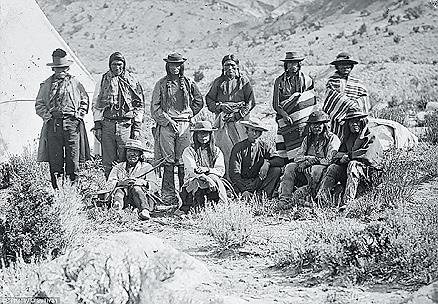In the late 19th century, the US government began a large-scale survey of the western frontier of the country. Having successfully defeated and otherwise subjugated the Native Americans whose lands these were, the focus was now on tapping the region’s rich natural resources. What the surveyors found were incredible canyons, ancient rock formations; a gigantic land of breathtaking beauty and variety.
Accompanying the surveyors was the photographer Timothy O’Sullivan, an Irish American. With his box camera he had previously chronicled the Civil War, and certainly didn’t feel out of place in the survey’s military style campaigns.
What sets him apart from other photographers working in the field was the honesty of his photographs. O’Sullivan didn’t try to beautify the landscape. Instead he captured the west’s grandeur on its own terms. These three photographs include a striking portrait of a group of Pah-Ute braves near Cedar, Utah, the canyon walls of the Canyon de Chelly National Monument in Arizona and the junction of the gigantic Green and Yampah Canyons in Utah.
Timothy O’Sullivan was in the right place at the right time to document an old land that was on the point of being completely overrun and changed by the new.




